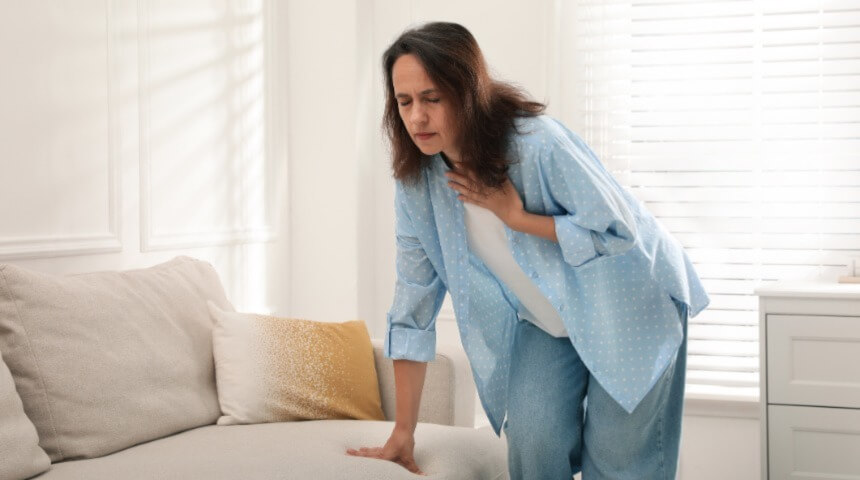Occasional swelling in an arm or leg might seem like a minor annoyance, but you shouldn’t ignore it. It may signal a medical condition called lymphedema, which can be painful and limit movement.
Lymphedema is a sign the lymphatic system is failing to perform one of its key duties – draining excess fluid from the body’s tissues back into the bloodstream. Left untreated, the buildup of this protein-rich fluid raises the risk of infection and slows healing because infection-fighting cells can’t get to that part of the body. It can also cause tissues to harden, leading to feelings of stiffness or soreness in nearby joints.
Is It Lymphedema?
“Edema” means swelling caused by an under-the-skin buildup of excess fluids, mostly water. “Lymphedema” is a particular kind of edema, and in this case the trapped liquid is “lymph,” which filters waste from the body and is critical to your immune system.
Lymph is composed of infection-fighting white blood cells and fluid containing fats and proteins. The protein molecules cause the problem because they are heavier than water, so a damaged lymph system leaves them behind.
Because lymphedema is often confused with other diseases that cause swelling, your medical team will need to know your family and medical histories and then may confirm the diagnosis with a test called a “lymphoscintigraphy.” In this test, a tracer protein is injected into the hand or foot and then tracked as it makes its way through the lymphatic system.
What Causes Lymphedema?
Lymphedema may have a hereditary component in which faulty genes are passed along that interrupt development of the lymphatic system. This is called primary lymphedema. Secondary lymphedema can be triggered by injury to the lymphatic system from an infection or trauma – including surgical removal of lymph nodes or radiation therapy to treat cancer. The cancers most likely to require such treatments include:
- Skin cancer (melanoma)
- Breast cancer
- Cervical cancer
- Prostate cancer
Additionally, certain physical conditions appear to raise the risk of developing lymphedema, including rheumatoid arthritis, increased age and obesity.
If you suspect lymphedema, look for these symptoms:
- Frequent skin infections
- Pain or heaviness in a limb
- Limited movement in a limb
- Hard, tight skin
- Fluid leaking from skin
Can You Prevent Lymphedema?
If you are at risk of developing lymphedema, you can reduce the likelihood with a healthy lifestyle including exercise and weight management, and you can limit its effects through good skin care, including:
- Using sunscreen and insect repellent to prevent burns and bites
- Promptly treating cuts and scrapes with an antiseptic
- Using moisturizer regularly to keep skin soft
- Avoiding extremely hot or cold water when bathing or showering
Additionally, cancer patients may be advised to have a sentinel lymph node biopsy prior to surgery. This procedure can help your surgeon identify how far the cancer has spread and which lymph nodes should be removed while preserving others.
How Is Lymphedema Treated?
Depending on the severity of your lymphedema, your doctor may refer you to a certified lymphedema therapist, who may treat you with these techniques:
- Exercise. You may be given specific exercises to keep the affected limb moving, as this can help reduce fluid buildup.
- Compression bandages or stockings. When combined with exercise, these may help move fluid out of the affected limbs and prevent further buildup.
- Massage. Specialized massage techniques known as manual lymphatic drainage stimulate the flow of lymph fluid toward an area with healthy lymph nodes.
Sequential pneumatic pumping, which uses a mechanical device to supply compression at regular intervals to the affected limb, may help keep lymphedema under control after initial treatment.
Surgery, while rare, may be used to remove swollen tissue or to create new drainage routes. One such procedure, vascularized lymph node transfer, removes lymph nodes from a healthy part of the body and transplants them where needed.
While there is no cure for lymphedema, with proper care and vigilance, you should be able to reduce symptoms, slow progression and end complications.
Choose to Stay in Touch
Sign up to receive the latest health news and trends, wellness & prevention tips, and much more from Orlando Health.
Sign Up











